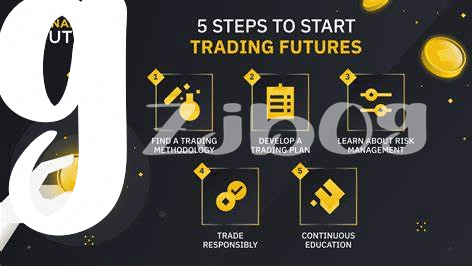Exploring Bitcoin Futures: What’s the Big Deal? 🌍

Imagine diving into a world where you can bet on the future price of digital gold, also known as Bitcoin, without holding it in your virtual wallet. That’s the magic of Bitcoin futures! By allowing people to agree on a future price for Bitcoin, these financial contracts enable investors and traders to speculate on its price movement, without needing to own the actual Bitcoin. This way, folks can hedge against price swings or aim to profit from them, making Bitcoin futures a significant draw in the world of cryptocurrency. As we journey through various corners of the globe, we’ll see how countries are putting their unique spin on regulating this innovative market. With Bitcoin’s price known for its wild roller coaster rides, these regulations are crucial for investor protection and market stability. Understanding these rules is like having a roadmap in a landscape where digital meets traditional finance, guiding everyone from seasoned investors to curious newcomers through the thrilling yet complex world of Bitcoin futures.
| Country | Approach to Regulation | Focus Area |
|---|---|---|
| 🇺🇸 United States | Moderate | Investor Protection |
| 🇪🇺 Europe | Varied | Safety Measures |
| 🇨🇳 China | Strict | Market Control |
The United States: a Leader in Regulation? 🇺🇸
When it comes to navigating the complex world of Bitcoin futures, many look towards the U.S. for its pioneering stance. This country has been at the forefront, creating a rulebook that others might follow or adapt. Think of it as a big playground where the U.S. tries to make sure everyone plays nice and safe. They’ve set up rules that help protect people who are investing, sort of like making sure you’re wearing a helmet when you’re biking. Agencies like the Commodity Futures Trading Commission (CFTC) play the role of the watchful guardians, overseeing the market to keep things fair and under control. But even with strict oversight, the U.S. manages to keep the doors open for innovation, welcoming new ideas while making sure they don’t rock the boat too much. This balance between safety and innovation positions the U.S. as a significant influencer in how other countries approach the Bitcoin futures market. For more on blockchain’s potential to power up financial inclusion and revolutionize industries, check out this insightful piece on how geothermal power is revolutionizing Bitcoin mining efficiency.
Europe’s Approach to Bitcoin Futures and Safety 🇪🇺

In Europe, the way folks look at Bitcoin futures is a bit like how they approach a delicate dish – with caution and a lot of care for safety. Imagine mixing ingredients from different countries to make a meal. Similarly, Europe combines rules from various places to manage Bitcoin futures, aiming to protect everyone involved, like ensuring no one gets a stomachache from our meal analogy. This careful approach helps make sure that investing in Bitcoin futures is as safe as having dinner at a friend’s house, rather than a leap into the unknown.
As we zoom in on this approach, it’s clear that Europe values transparency and risk management. 🧐🌐 They’re like the friend who tells you exactly what’s in your food, making sure you’re okay with it before you take a bite. This means investors have a clear picture of what they’re getting into, which minimizes surprises down the road. Regulations in Europe may seem strict, but they’re all about making sure that when it comes to Bitcoin futures, everyone plays in a safe playground. After all, it’s about enjoying the game without worrying about getting hurt. 🛡️🚀
China’s Tight Grip on Bitcoin Futures Market 🇨🇳

In the global dance of Bitcoin futures, China moves to its own rhythm 🎶. The country has wrapped its regulatory arms tightly around this market, steering clear of the looser approach seen elsewhere. Think of it as the difference between a free dance and a choreographed routine. China’s stance is more about keeping the beat under control, ensuring every step aligns with broader financial stability and societal norms. This unique approach has sparked conversations worldwide, with some viewing it as a protective measure, while others see it as a barrier to innovation.
This tension between innovation and control isn’t just about one country’s policy; it’s part of a larger narrative on how digital currencies fit into global finance. For more insights into how communities around Bitcoin are pushing for a more inclusive financial system, checking out bitcoin’s contribution to financial inclusion worldwide regulatory outlook can offer a broader view. As we witness different regions striking their balances, it’s clear that the conversation around Bitcoin futures is far from over. The question is, how will these contrasting approaches influence the global path to financial innovation? 🌐🔍
Comparing Regulations: Asia Vs. the West 🔍
When we peek around the globe to understand how different parts of the world are dealing with Bitcoin futures, a fascinating narrative unfolds. In the West, particularly in the United States, there’s a somewhat open approach, with regulations aiming to strike a balance between nurturing innovation and protecting investors. Here, they tread carefully, ensuring that the financial playground remains safe yet progressive. On the contrary, Asia presents a mixed bag of regulations, showcasing diverse strategies from country to country. China, for example, holds a firm stance against Bitcoin futures, reflecting its broader cautious attitude towards cryptocurrencies. Meanwhile, other Asian countries are crafting their own paths, some aligning closely with the Western perspective by embracing these digital financial instruments, ensuring safeguards are in place. This East vs. West regulatory landscape underscores a global dialogue on financial innovation and risk, pointing towards a future where finding common ground could lead to widespread adoption and stability in the Bitcoin futures market.
| Region | Approach to Bitcoin Futures |
|---|---|
| United States (West) | Balance between innovation and protection |
| Europe (West) | Emphasizes safety and regulatory compliance |
| China (Asia) | Cautious, with tighter controls |
| Other Asian Countries | Mixed approaches, some aligned with Western views |
The Future: Global Trends in Bitcoin Futures 🚀

As we gaze into the crystal ball of finance, it’s clear that Bitcoin Futures are gearing up for an exciting ride. Around the world, countries are waking up to the buzz of cryptocurrency and how it’s shaking up traditional financial markets. What’s interesting is seeing how this global conversation is not just about making quick money but also about making the digital currency landscape safer and more reliable for everyone. With eyes on innovation and security, there’s a growing trend towards embracing renewable energy solutions to power the immense energy demands of Bitcoin mining. For a closer look, delve into community-led bitcoin projects and their impact regulatory outlook, showcasing how communities are spearheading the shift towards greener practices in this dynamic sector.
Looking ahead, it’s predicted that there will be a harmonious mash-up of regulatory frameworks as East meets West in the Bitcoin Futures arena. Both sides of the globe are learning from each other, adapting and tweaking rules to ensure a balance between fostering innovation and guarding against risks. This cross-pollination of ideas is paving the way for a unified approach to managing the complexities of digital currencies. As countries navigate these waters, the spotlight is on creating a stable environment that encourages the responsible growth of Bitcoin Futures. The journey ahead is promising, with the potential to redefine the financial landscape as we know it. 🌱🔗🚀
